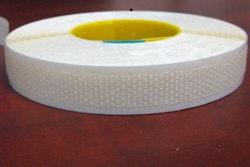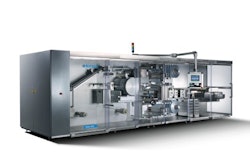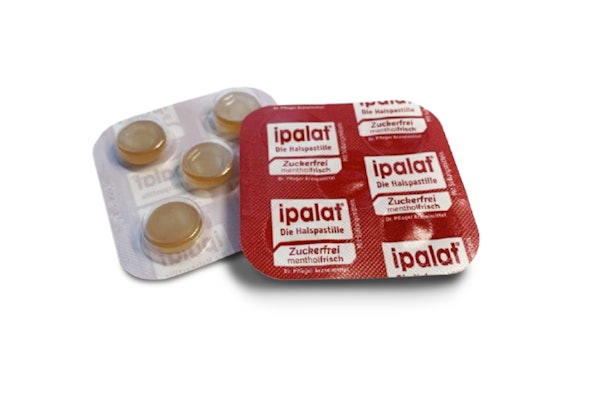
Healthcare Packaging (HCP): What's new with regard to pharmaceutical package design today?
Phillip Federspiel (PF): The switch to OTC puts more demand on package design to convey information about compliance, dosage, and self-medication--things that the pharmacist used to tell patients that now need to be incorporated on or inside the package. Now you are more responsible for your own self-medication as a patient. In that scenario, the package has to be even more clear and forthright with dosing and other information.
HCP: Do package design considerations involve input beyond that of the product manufacturer/packager?
PF: We work with what we call the “community of interest” that involves communication with end users, physicians, and companies along the distribution channel, but mostly we are trying to figure out what's key from a consumer perspective. When you are looking at a shelf full of OTC products, what do you see? What we frequently find from our own evaluations and from consumer research is a “sea of sameness,” a wall with no windows or point of interest—that is, no meaningful differentiation visible and understandable from a two- to three-foot distance.
HCP: Often times, you don't have a whole lot of space on the package to add all the regulatory and patient information, correct?
PF: That's one of our biggest issues. There are space constraints not only on the package, but also on shelves where a product category is extremely cluttered. We recently worked on an allergy product and built a planogram in our office to mimic the category space in a store for the purposes of market research testing. Everyone from the diverse “community of interest” whom we invited was confused by the package communication in the category, making it difficult to select the appropriate product.
HCP: Couldn't extended-text labels, or other options help carry all that information?
PF: We're seeing companies use labels with accordion-like folds, but they are expensive and complex. They allow some real estate for the multilingual text, and for dosing and compliance issues. It's not a magic bullet, but it's one way to increase billboard space.
HCP: For years, pharmaceutical packaging “design” meant meeting regulatory objectives, but that didn't leave much room for innovation did it?
PF: Meeting FDA concerns has been their focus. There really wasn't a consumer focus at all in terms of functional benefit. Going forward I think there's going to be a greater role for packaging to educate consumers and to provide functional benefits—and differentiation—through its structure. That could mean any one of a number of things—consumer interface, ease of use and storage, dosing aids, sustainability, and the list goes on. There is an opportunity to drive consumer value into this equation and those values need to be derived from consumers.
-Jim Butschli, Editor
Phillip Federspiel (PF): The switch to OTC puts more demand on package design to convey information about compliance, dosage, and self-medication--things that the pharmacist used to tell patients that now need to be incorporated on or inside the package. Now you are more responsible for your own self-medication as a patient. In that scenario, the package has to be even more clear and forthright with dosing and other information.
HCP: Do package design considerations involve input beyond that of the product manufacturer/packager?
PF: We work with what we call the “community of interest” that involves communication with end users, physicians, and companies along the distribution channel, but mostly we are trying to figure out what's key from a consumer perspective. When you are looking at a shelf full of OTC products, what do you see? What we frequently find from our own evaluations and from consumer research is a “sea of sameness,” a wall with no windows or point of interest—that is, no meaningful differentiation visible and understandable from a two- to three-foot distance.
HCP: Often times, you don't have a whole lot of space on the package to add all the regulatory and patient information, correct?
PF: That's one of our biggest issues. There are space constraints not only on the package, but also on shelves where a product category is extremely cluttered. We recently worked on an allergy product and built a planogram in our office to mimic the category space in a store for the purposes of market research testing. Everyone from the diverse “community of interest” whom we invited was confused by the package communication in the category, making it difficult to select the appropriate product.
HCP: Couldn't extended-text labels, or other options help carry all that information?
PF: We're seeing companies use labels with accordion-like folds, but they are expensive and complex. They allow some real estate for the multilingual text, and for dosing and compliance issues. It's not a magic bullet, but it's one way to increase billboard space.
HCP: For years, pharmaceutical packaging “design” meant meeting regulatory objectives, but that didn't leave much room for innovation did it?
PF: Meeting FDA concerns has been their focus. There really wasn't a consumer focus at all in terms of functional benefit. Going forward I think there's going to be a greater role for packaging to educate consumers and to provide functional benefits—and differentiation—through its structure. That could mean any one of a number of things—consumer interface, ease of use and storage, dosing aids, sustainability, and the list goes on. There is an opportunity to drive consumer value into this equation and those values need to be derived from consumers.
-Jim Butschli, Editor



















